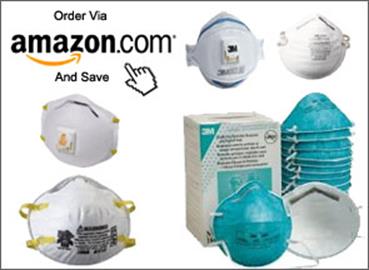Illnesses caused by viruses usually run their course in 7-10 days. Illnesses caused by bacteria can sometimes be fought off by the body for the most part if not treated with antibiotics they just get worse and can result in death.
Antibiotics are not like pain killers. You cannot just pick your favorite brand. The bugs that antibiotics fight are different. Intestinal diarrhea bacteria are much different from throat, sinus and ear infection bacteria. You have to match the antibiotic with the bug you are fighting. Additionally, some people are allergic to some antibiotics especially the penicillin family. Finally, if you take antibiotics when they are not needed, say for a cold, or if you don’t take them correctly or for the full length of time prescribed, you can help produce antibiotic resistant bacteria.
The FDA and the medical profession control the dispensing of antibiotics through prescriptions. In some countries like Canada and Mexico, you can buy antibiotics over the counter without a prescription. I feel everyone needs to store antibiotics for SHTF scenarios. The questions are “What do I store?”, “Where do I get it?”, “How do I use it?”, and “How do I store it?”
I am not a doctor. My medical background is 3 years as a Med-Tech in the US Army, 1 year of which was spent in a microbiology lab working with some very nasty bacteria, and a life of helping to raise kids that had more than their share of aches, pains and ills. I am not giving medical advice. I am only giving you my opinion based on my personal experience and study. If you need medical advice, seek out the help of a licensed medical professional.
What do I Store?
Everyone has an opinion on this and I will give you some references to study this on your own. Everyone is a little different. Different bugs hit different areas of the country. Kids cannot take some antibiotics that adults can take. Some antibiotics are inexpensive and some cost a bunch. Some antibiotics are easy to obtain and some are hard to get a hold of. I am going to give you a list of the antibiotics that I store and tell you why.
First some references:
Cynthia J. Koelker, MD
http://www.survivalblog.com/2011/02/seven_antibiotics_to_stockpile.html
Amoxicillin, Cephalexin, Cipro, Doxycycline, Erythromycin, Metronidazole, SMZ-TMP
The Patriot Nurse
Zithromax, Ampicillin, Cipro, Amoxicillin, Doxycycline
Dr. Bob
http://www.survivinghealthy.com/?page_id=100
Basic – Penicillin, Amoxicillin, Doxycycline, Cephalexin, Sulfa
Penicillin Allergy – Doxycycline, Sulfa, Cefdinir, Cipro
As you can see there is a variety of opinions. So I’ll add one more list to the mix. This is based on my family’s needs. We have no young children or infants and we have one family member that is allergic to some penicillin family drugs. I am giving the generic names since these are cheapest and in the US are just as effective.
Azithromycin – Treats middle ear infections, Upper Respiratory Infections (strep throat, sinusitist), Lower Respiratory Infections (pneumonia, bronchitis) Mycoplasmal Infection (walking pneumonia), Typhoid, Syphilis, PID, Chlamydia, Traveler’s Diarrhea, Lyme Disease and other infections. Azithromycin is derived from Erythromycin but is more effective against some bacteria.
Most common side effects are gastrointestinal: diarrhea (5%), nausea (3%), abdominal pain (3%), and vomiting. Fewer than 1% of patients stop taking the drug due to side effects.
I like Azithromycin because it is a broad spectrum antibiotic and it is not in the penicillin family so you don’t have to worry about the penicillin allergic reactions. It is more effective than many older antibiotics and as of yet, bacteria has not shown much resistance to it. A point against Azithromycin is that it is more expensive than other antibiotics. If cost is a concern Cephalexin and Erythromycin cover pretty much the same bacteria spectrum.
Cephalexin – Treats middle ear infections, Upper Respiratory Infections (strep throat, sinusitist), Lower Respiratory Infections (pneumonia, bronchitis) Bone and Joint Infections, Skin Infections (except MRSA) and Urinary Tract Infections, and other infections.
Cephalexin is well-tolerated in children and is safe in pregnant women. Most common side effects are gastrointestinal upset such as diarrhea, nausea, vomiting, indigestion, and abdominal pain.
Ciprofloxacin – Treats Urinary Tract Infection, Prostate Infections, Respiratory Tract Infections (Pneumonia, Bronchitis), Bacterial Diarrhea, Mycoplasmal Infection (walking pneumonia), Gonorrhea, Diverticulitis (in combination with Metronidazole), Anthrax, and other infections.
Ciprofloxacin should not be used by children, pregnant or nursing women or patients with epilepsy or other seizure disorders.
Doxycycline – Treats Respiratory infections, Sinus Infection, Mycoplasmal Infection (walking pneumonia), , Syphilis, PID, Chlamydia, Prostate Infections, Typhus, Lyme Disease, Malaria and other infections.
Doxycycline should not be used by children, pregnant or nursing women. Side effects can include Skin Sensitivity to the sun, Renal Impairment, and impaired effectiveness of birth control.
Close Runners Up
Amoxicillin – Treats middle ear infections, Upper Respiratory Infections (strep throat, sinusitist), Lower Respiratory Infections (pneumonia, bronchitis) Mycoplasmal Infection (walking pneumonia) and other infections. Erythromycin is also used before dental work to prevent infection.
It is safe for children and pregnant women. It is well-tolerated, causing few side effects.
So why don’t I include it with my main stores? Some people are severely allergic to it and it has been so over used in humans and in animals that many bacteria have developed resistance to it.
Erythromycin – Treats middle ear infections, Upper Respiratory Infections (strep throat, sinusitist), Lower Respiratory Infections (pneumonia, bronchitis) Mycoplasmal Infection (walking pneumonia), Early Syphilis, Chlamydia, Lyme Disease and other infections.
Erythromycin is also used before some surgery or dental work to prevent infection. It can be safely used in children and pregnant women.
Erythromycin tends to cause the intestine to contract. Common side effects include, cramps, diarrhea and other Gastrointestinal disturbances like nausea, abdominal pain, and vomiting.
Why don’t I include it with my main stores? If I didn’t include Azithromycin, I would include Erythromycin.
Special Cases
A couple of special cases antibiotics. If you have the money and want to add a couple of specialty antibiotics to your stores just in case you run into the unusual, here are two antibiotics to consider. If I only added one of them it would be Metronidazole.
Metronidazole – Antibiotic used particularly for anaerobic bacteria and protozoa. Treats Bacterial vaginosis, PID, Diverticulitis, Aspiration pneumonia, Lung Abscess, Diabetic Foot Ulcer, Meningitis, Brain Abscesses, Bone and Joint Infections, Septicemia, Eendometritis, and other infections. It is also effective for amoeba conditions like Trichomoniasis and Giardasis.
Metronidazole should not be used to treat children. Common side effects include diarrhea and nausea and metallic taste in the mouth.
SMZ-TMP – Contains Sulfamethoxazole and Trimethoprim. Sulfamethoxazole is effective against some Upper and Lower Respiratory Tract Infections and Urinary Tract Infections. Trimethoprim is used mainly for Urinary Tract Infections. SMZ-TMP is effective against skin and wound infections, especially treating resistant staph (MRSA).
Common side effects include painful or swollen tongue, dizziness, spinning sensation, ringing in your ears, joint pain, or sleep problems (insomnia).
Where do I get it?
This might be the Sixty-Four Dollar question but I’ll try and give you some options.
Option 1 – Find a sympathetic doctor who you have a relationship with and is willing to write a prescription for you. Make sure you are knowledgeable and can explain what you want, why you want it and how you plan on using it. If you can’t talk intelligently with your doctor, they won’t feel good about writing you a prescription.
You can tell your doctor about prepping and ask for prescriptions for stores. Another possibility is to get antibiotics in preparation for a trip to a third world country. When I went to the far east, my doctor gave me a prescription for Azithromycin, Ciprofloxacin, and Doxycycline to take with me. The Azithromycin was for any upper respiratory infection I might get, the Ciprofloxacin was for any urinary tract infection I may get and the Doxycycline was for protection from Malaria. I had a great illness-free trip and put the antibiotics in storage when I returned home.
A variation on this theme is http://www.survivinghealthy.com. Dr. Bob is a real physician. He understand a prepper’s need to store antibiotics. He has 4 ready made antibiotic packs ranging from $120 to $220. You fill out a patient information form and then order your antibiotics. The antibiotics come in your name with information on their use and dosages. This is all legal and above board.
Option 2 – Visit Canada or Mexico. Both countries sell antibiotics over the counter without a prescription. You notice I said VISIT Canada or Mexico. Don’t order the antibiotics, especially from Mexico. Mail order drugs have a good chance to be nothing but placebos. Drugs bought face to face over the counter in a pharmacy will be okay.
As I understand US customs laws, you can bring 50 units (pills) per person of any antibiotic for your personal use back into the US with you. If the total cost of the pills exceeds $300 you may have to pay a customs fee.
Option 3 – This one is a grey area. From my research it appears that antibiotics made for animals (especially fish and birds) are the exact same antibiotics made for humans. The key is to ensure that the antibiotic is the only ingredient in the pill or capsule and that the dosage is the same as the human dosage. I have to add that ordering or having a controlled substance with intent to use it other than its intended purpose is against the law. Buying pet antibiotics and storing them in preparation for buying fish or birds as pets seems to be within the law. If SHTF and you had to pull out the pet antibiotics and use them in an emergency, I don’t think you would receive any grief.
Here is a list of pet antibiotics and their generic equivalents.
• FISH-MOX (amoxicillin 250mg)
• FISH_MOX FORTE (amoxicillin 500mg)
• FISH-CILLIN (ampicillin 250mg)
• FISH-MYCIN (erythromycin 250mg)
• FISH-FLEX (keflex 250mg)
• FISH-FLEX FORTE (keflex 500mg)
• FISH-ZOLE (metronidazole 250mg)
• FISH-PEN (penicillin 250mg)
• FISH-PEN FORTE (penicillin 500mg)
• FISH-CYCLINE (tetracycline 250mg)
• BIRD-BIOTIC (doxycycline 100mg)
• BIRD-SULFA (SMZ-TMP , sulfamethoxazole 400mg/trimethoprim 80mg)
You may have noticed that a pet equivalent for Azithromycin was not listed. At this time, Azithromycin is only licensed for humans. The other antibiotics are available at Amazon, PetMeds, ebay and lots of other places. Just do a search. Some of the least expensive places I have found are www.countrysidepet.com, http://www.fishmoxfishflex.com, http://www.vetinternetco.com,
One last thought. If you add the cost of antibiotics using this animal antibiotics option and the cost of the antibiotics packs you can order from Dr. Bob, there is less than a 5% – 10% difference.
How Do I Use It?
The dosage and length of time to take an antibiotic varies depending on what infection you are treating. There is no way I could cover all that information in this blog. The best source is to get a copy of the “Nurses Drug Handbook”. It will provide dosage and other information. I havee even seen this is a App for iphones, ipads, etc.
If you are going to store antibiotics and other drugs you need a reference book to help you use them properly. With that said, here are a few of the most common used for each antibiotic on my list.
Azithromycin
Tablets come in doses of 250 mg and 500 mg. The 250 mg tablets are often dispensed in packages of six and commonly referred to as a “Z-Pak,” A common dose of oral azithromycin therapy consists of a “double dose” of medication on the first day of treatment and subsequent treatment for four or five additional days.
Cephalexin
Usual Adult Dose for Ear Infection – 500 mg orally every 6 hours for 10 to 14 days
Usual Adult Dose for Upper Respiratory Tract Infection – 250 to 500 mg orally every 6 hours for 7 to 10 days
Ciprofloxacin
Urinary Tract Infection (Mild/Moderate) – 250 mg every 12 hours for 7 to 14 days
Urinary Tract Infection (Severe/Complicated) – 500 mg 250 mg every 12 hours for 7 to 14 days
Inhalational Anthrax – 500 mg 250 mg every 12 hours for 7 to 14 days
Doxycycline
Usual Adult Dose for Upper Respiratory Tract Infection – 100 mg orally every 12 hours for 7 to 10 days
Usual Adult Dose for Bronchitis – 100 mg orally every 12 hours for 7 to 10 days
Usual Adult Dose for Pneumonia – 100 mg orally or IV every 12 hours for 10 to 21 days
Erythromycin
Usual Adult Dose for Upper Respiratory Tract Infection – Mild to moderate infection: 250 to 500 mg (base, estolate, stearate) or 400 to 800 mg (ethylsuccinate) orally every 6 hours.
Usual Adult Dose for Otitis Media – Mild to moderate infection: 250 to 500 mg (base, estolate, stearate) or 400 to 800 mg (ethylsuccinate) orally every 6 hours.
Usual Adult Dose for Bronchitis – Mild to moderate infection: 250 to 500 mg (base, estolate, stearate) or 400 to 800 mg (ethylsuccinate) orally every 6 hours.
Metronidazole
Usual Adult Dose for Bacterial Vaginosis – 500 mg orally every 12 hours for 7 days
Usual Adult Dose for Amebiasis – 500 to 750 mg orally 3 times a day for 5 to 10 days
How Do I Store It?
The military conducted a series of drug shelf-life tests in conjunction with the FDA and drug companies. The drug companies participated on condition that the results would be known only to the military to aid them in stock piling drugs but the results should not be made known to the public for fear of lost revenue.
Here is a DOD news article about the tests. http://www.defense.gov/news/newsarticle.aspx?id=44979
Here is another article by Laurie P. Cohen, staff reporter for the Wall Street Journal. http://www.terrierman.com/antibiotics-WSJ.htm
The result of the testing was that they found out that more than 90% of medications were still effective up to 15 years after their expiration date.
Shelf-Life of drugs has a lot to do with storage conditions just like it does with food. Cool, Dry, and Dark are the optimum storage conditions. I use a reseal able paint cans from Home Depot to store my drugs. I have a gallon size for antibiotics and a quart size for pain medication. I put an oxygen absorber in with the prescription bottles and seal the lid tight. If I need to open the can to add or use some pills, I add a new oxygen absorber and reseal it. A glass jar would work just as well but make sure it is stored out of the light. (Metal and glass are the only air tight containers).
If you have a vacuum sealer you could vacuum seal the bottle of antibiotics in a bag before placing it in a paint can or glass jar.
Via: kissurvival











 Follow
Follow

